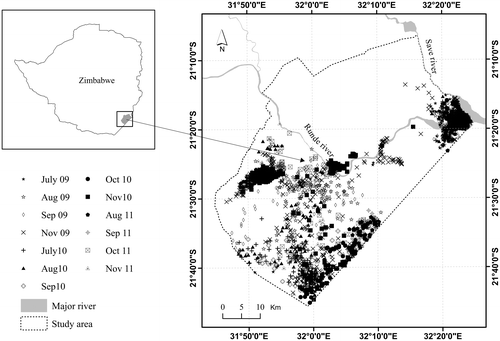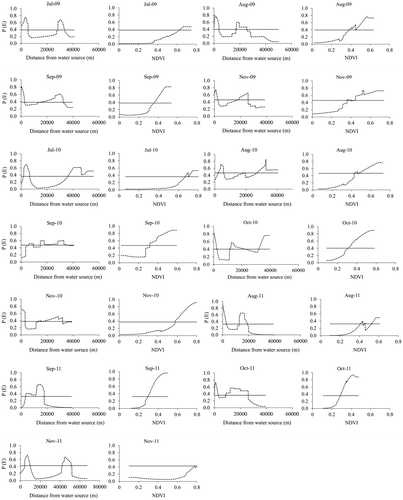Figures & data
Figure 1. Hypothetical framework: the predicted response of elephants to water in (a) an imaginary homogeneous landscape characterised by uniform forage quantity and (b) a more realistic heterogeneous landscape characterised by non-uniform forage quantity.

Figure 2. Elephant location data (from Global Positioning System (GPS) collars) collected from the eight elephants during 13 selected months between July 2009 and November 2011 in northern Gonarezhou National Park, south-east Zimbabwe.

Table 1. Elephant occurrence points used in the prediction of elephant habitat and the dates on which terra/MODIS NDVI image was acquired
Table 2. Performance and variable contribution of the MaxEnt models predicting the geographical distribution of elephants in the GNP during the dry season months of 2009, 2010 and 2011
Figure 3. Probability of elephant occurrence (P(E)) plotted against distance from water sources and NDVI from July 2009 to November 2011. Elephant occurrence generally peaked at least twice with distance from water sources.

Table 3. Peaks of elephant occurrence away from water sources and minimum NDVI within elephant habitat (habitat = probability values > the logistic threshold of equal training sensitivity and specificity)
Figure 4. Probability of elephant occurrence (P(E))—dotted line, and NDVI—continuous line plotted against distance from water sources, from July 2009 to November 2011.

